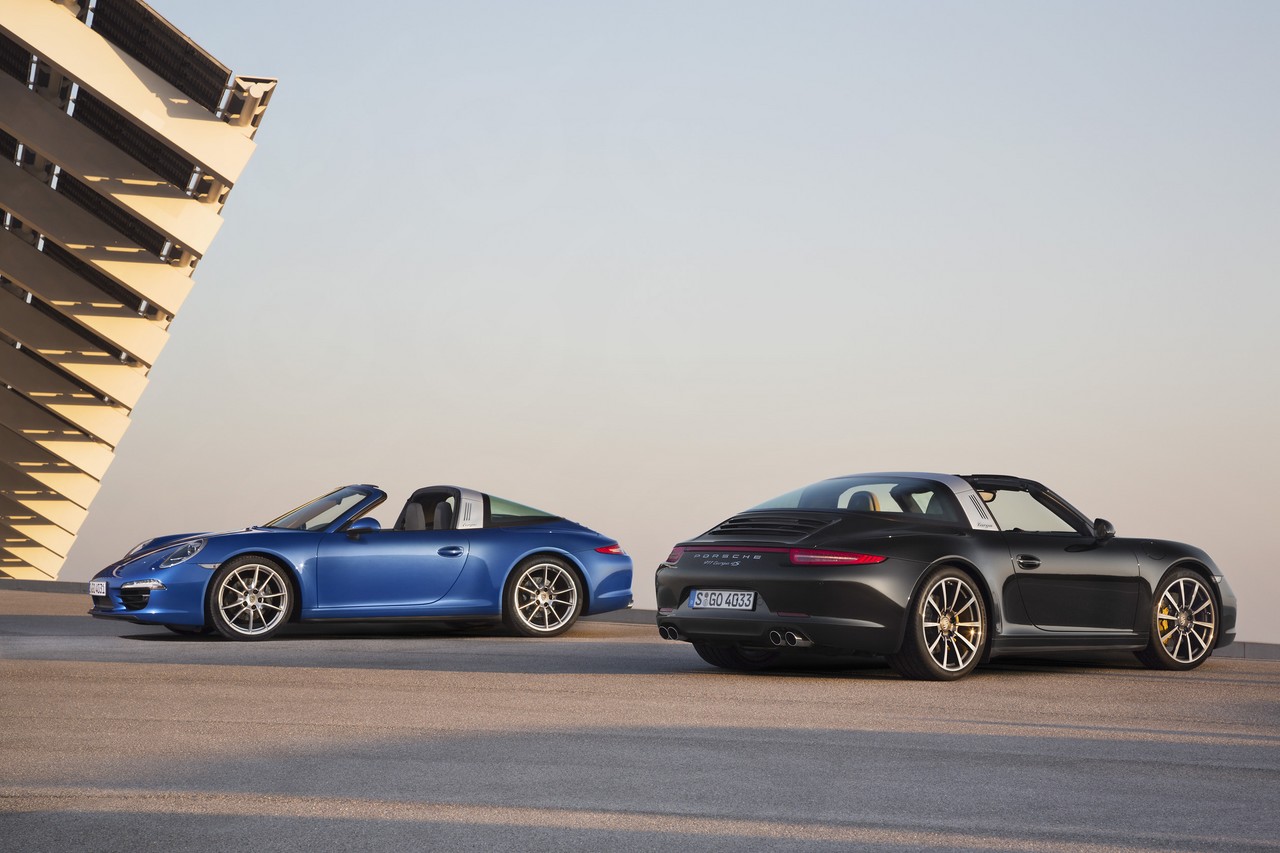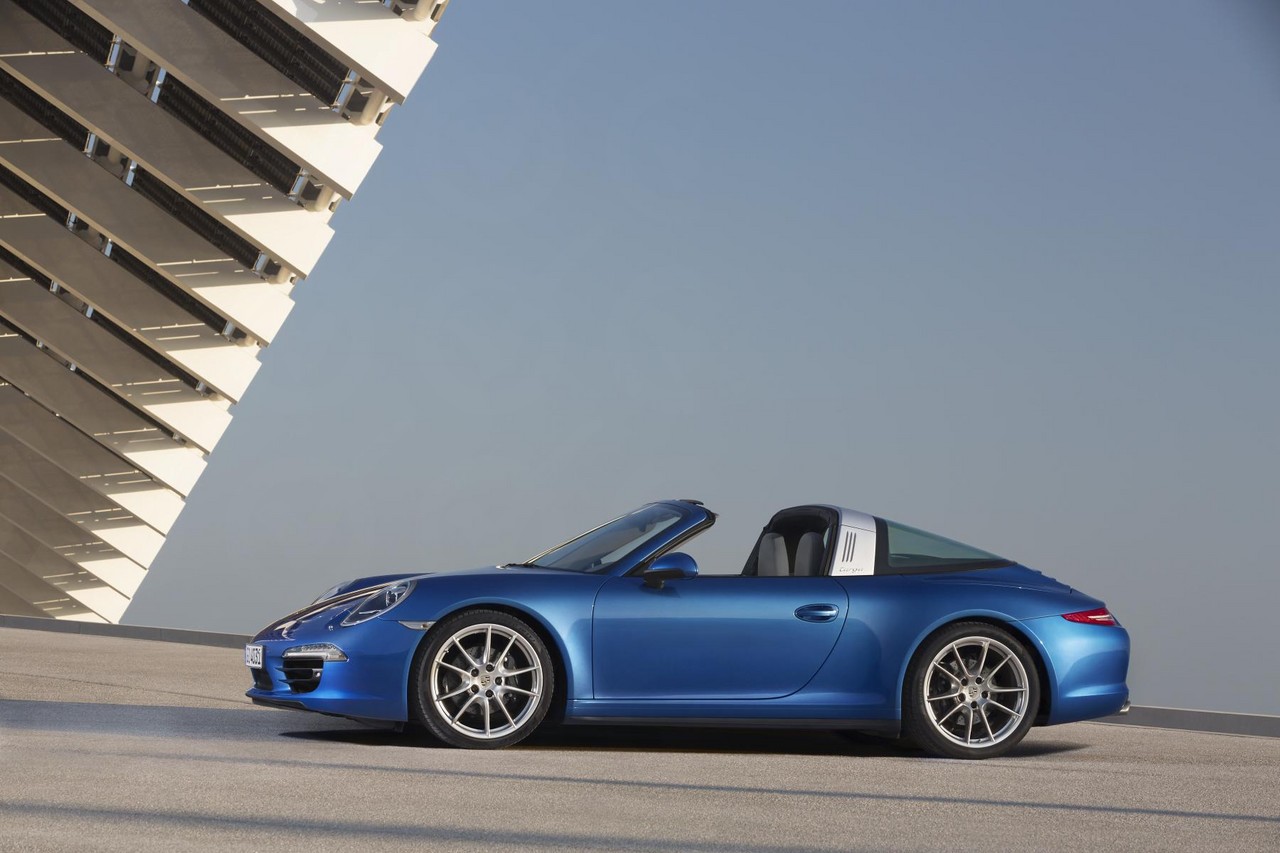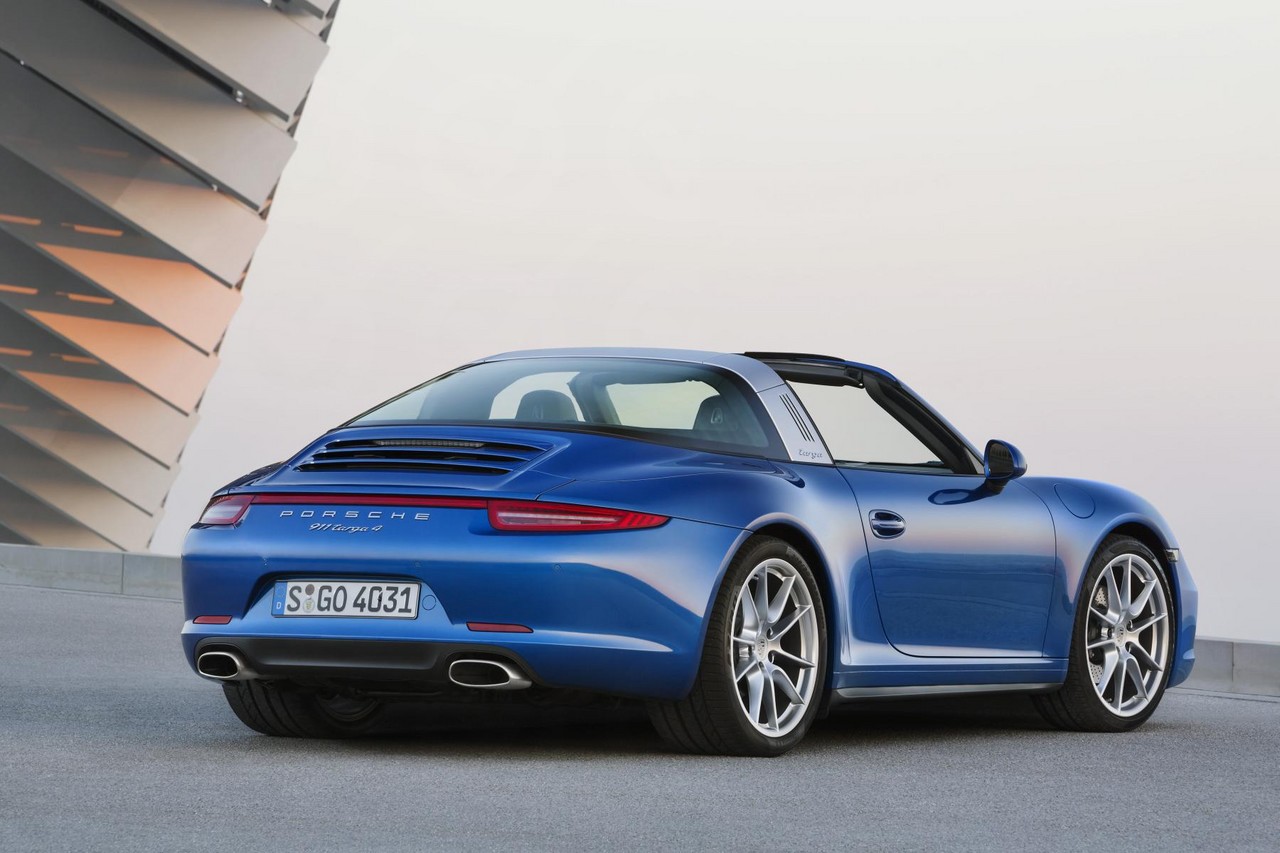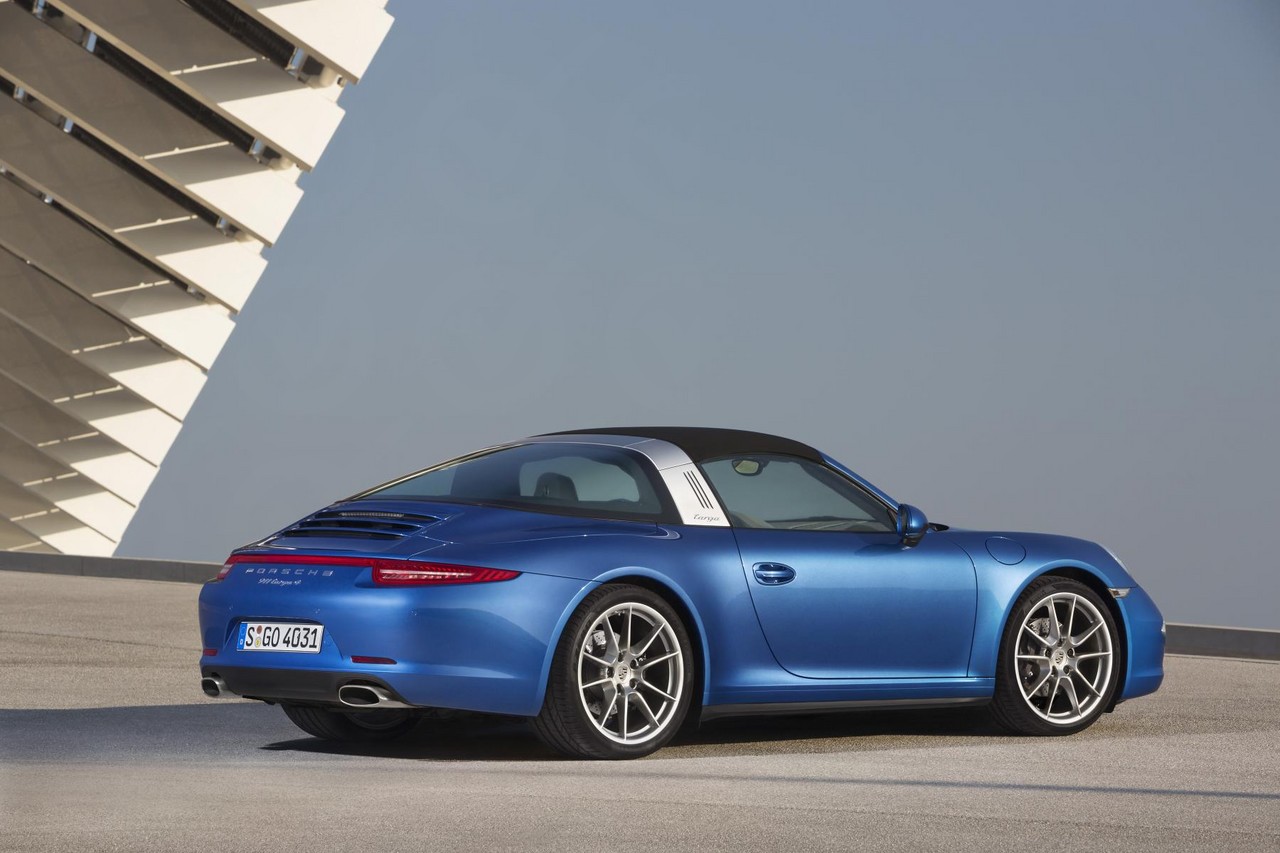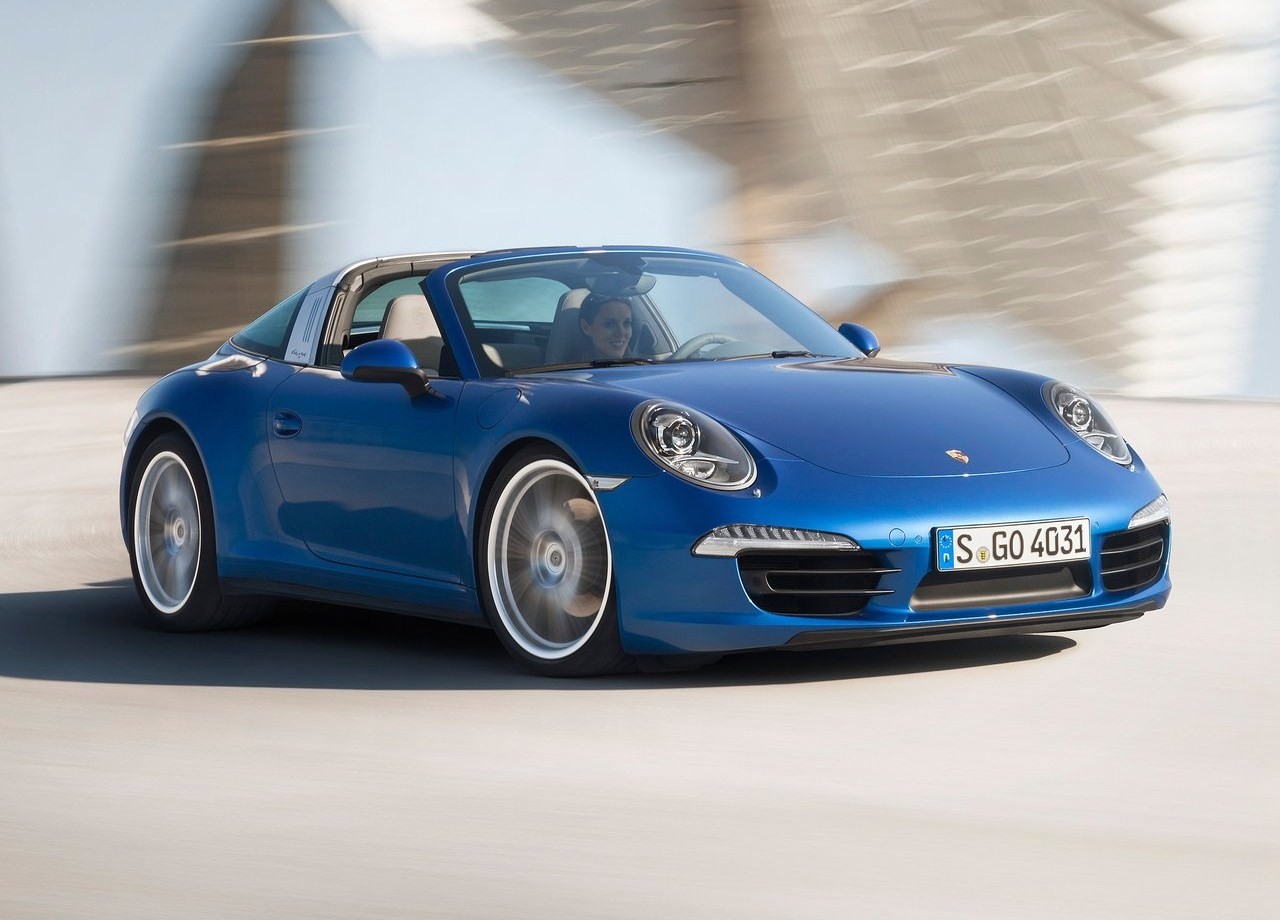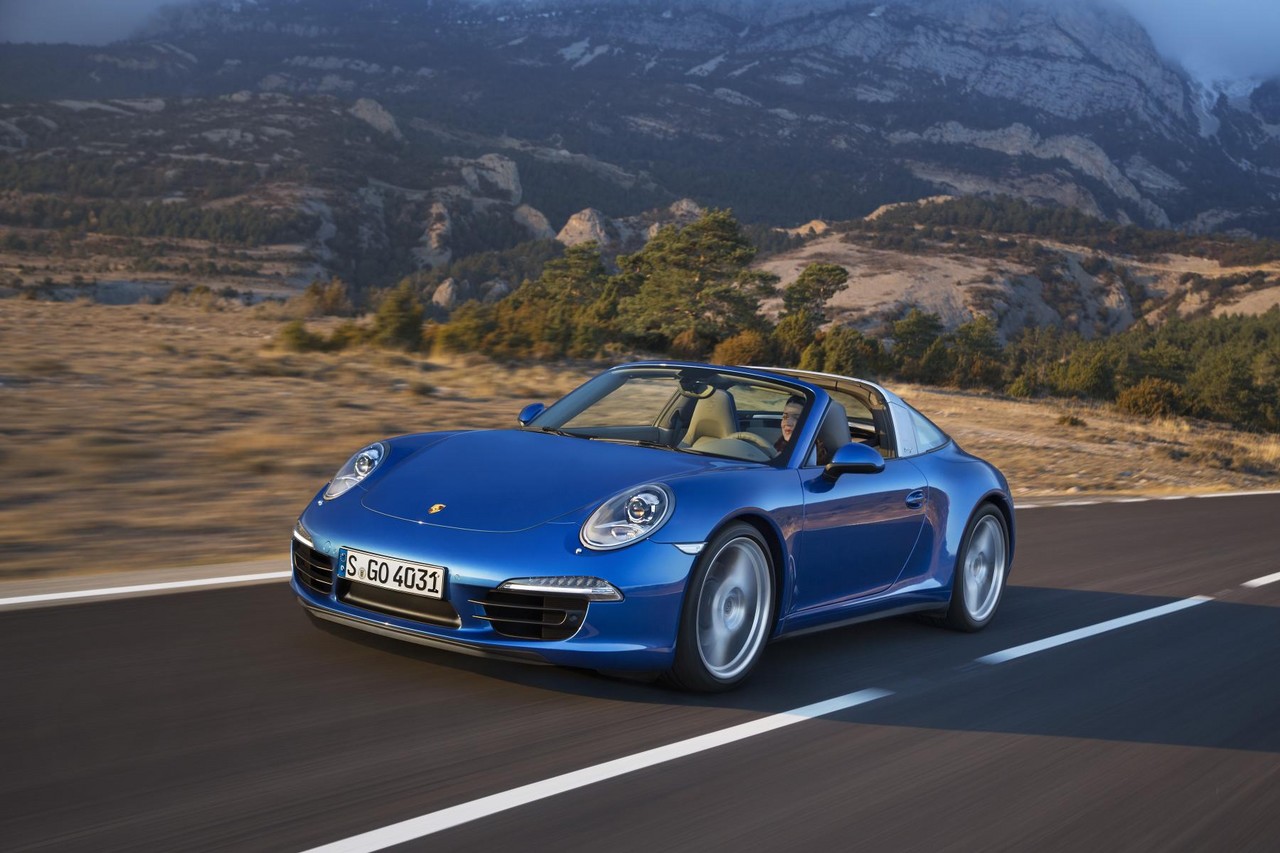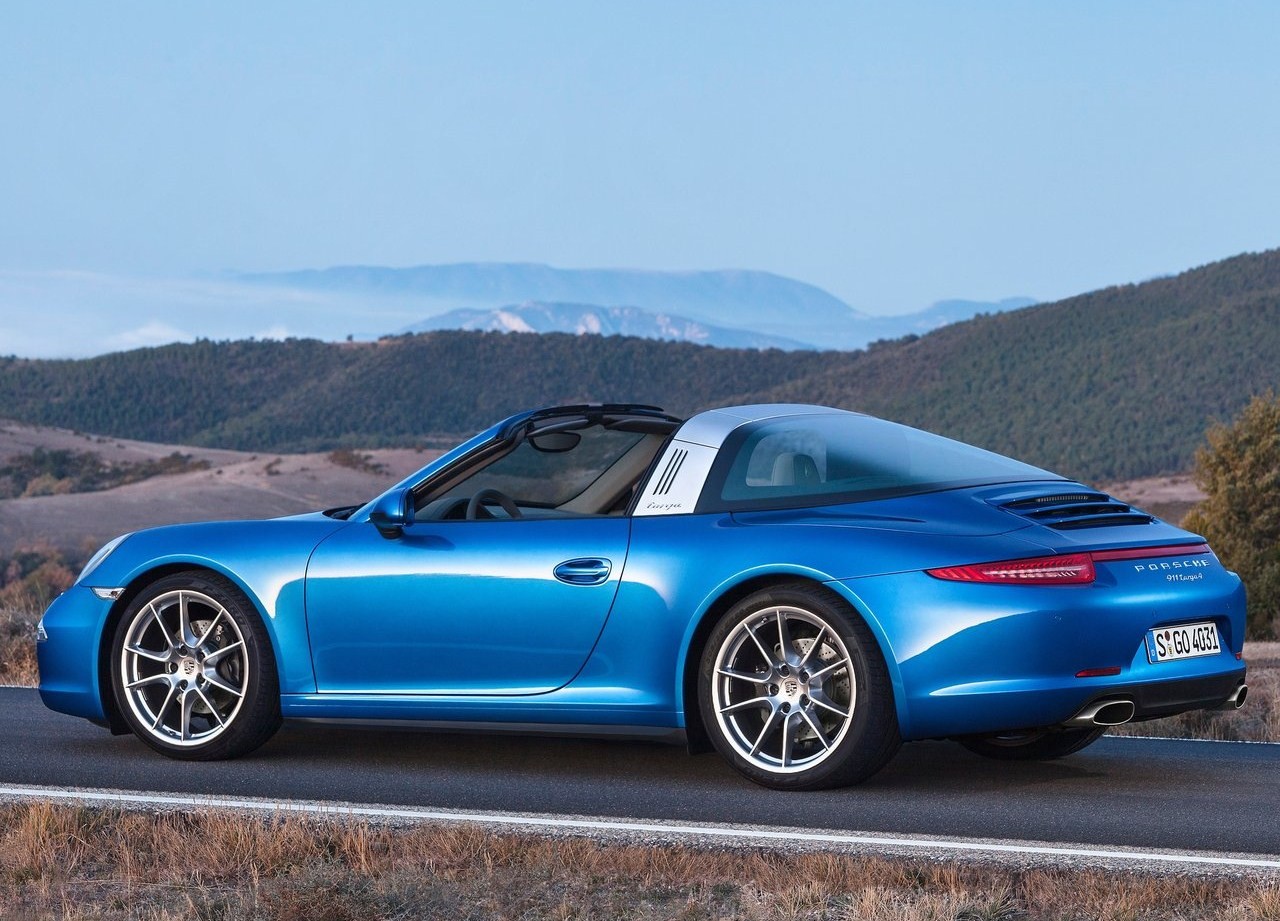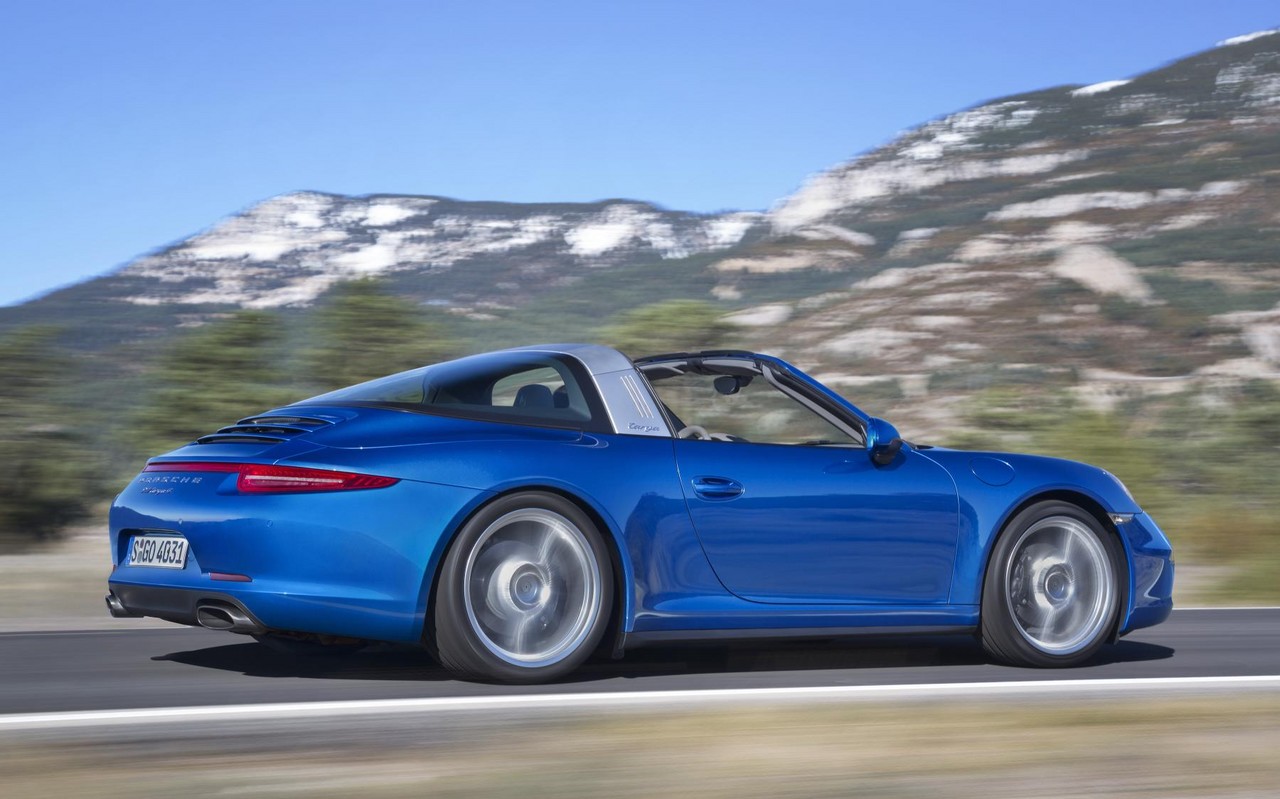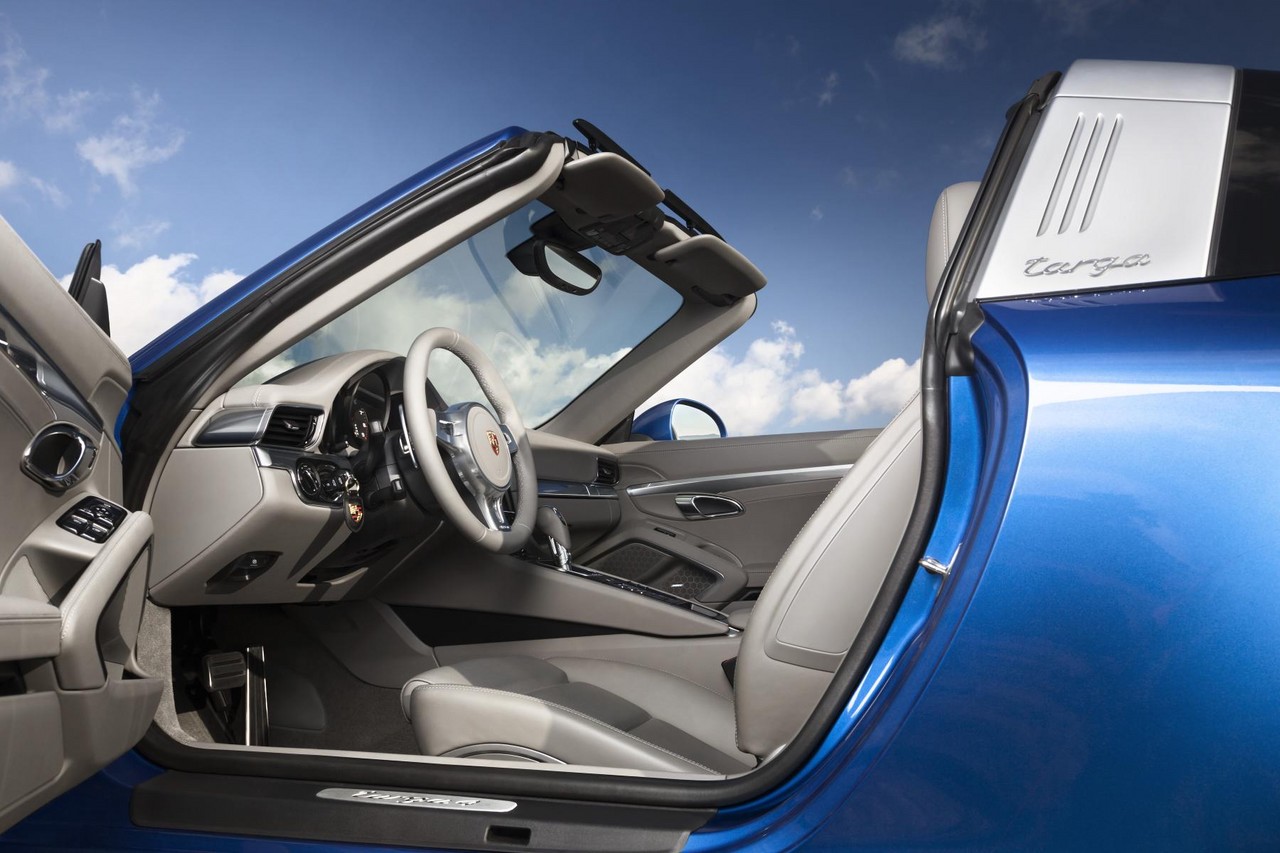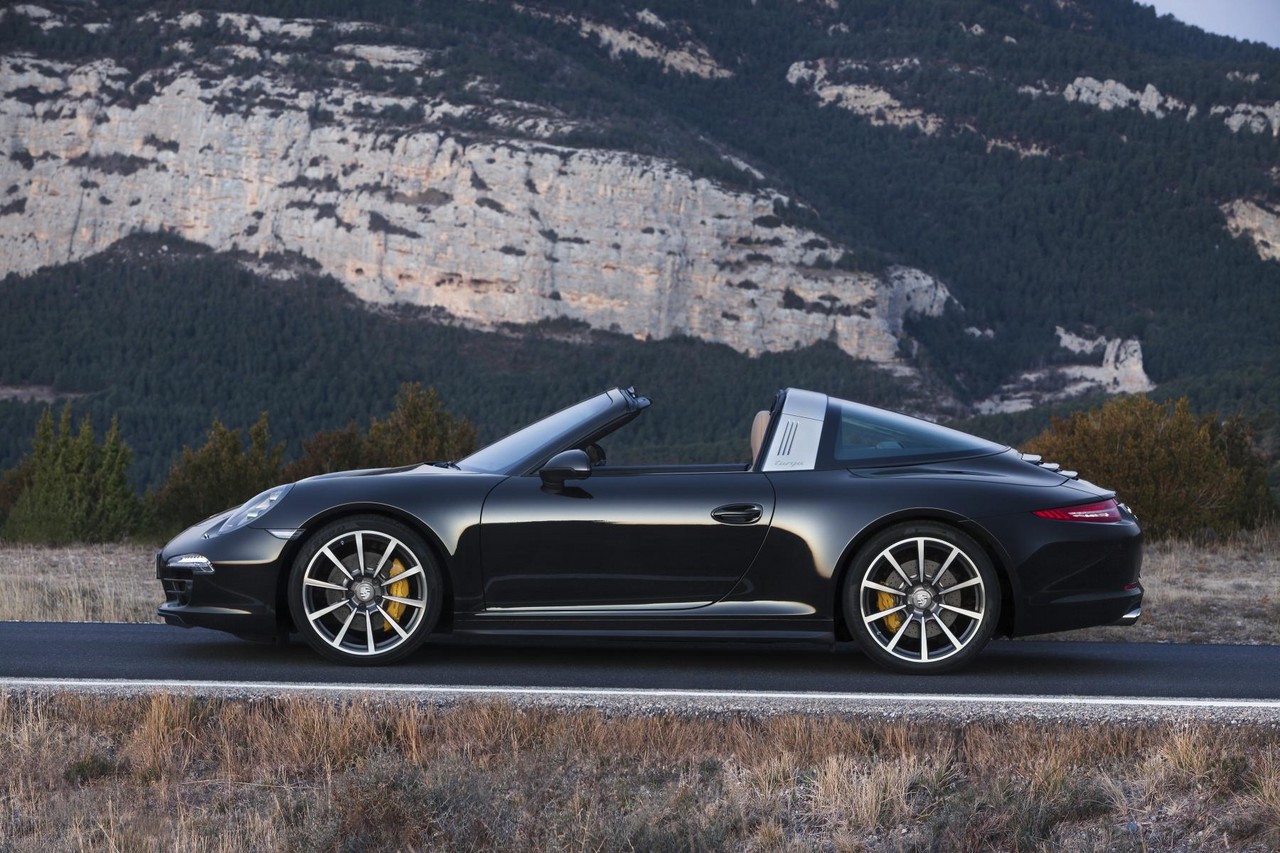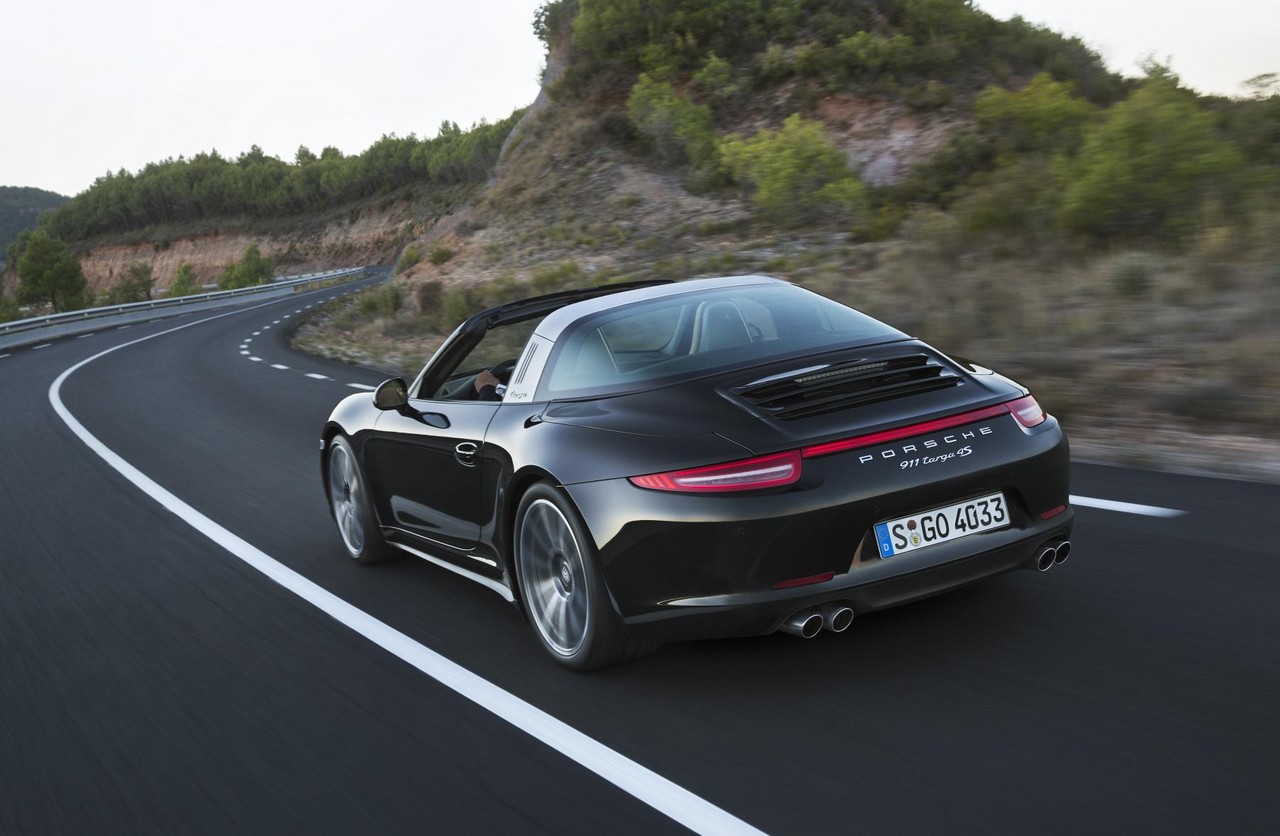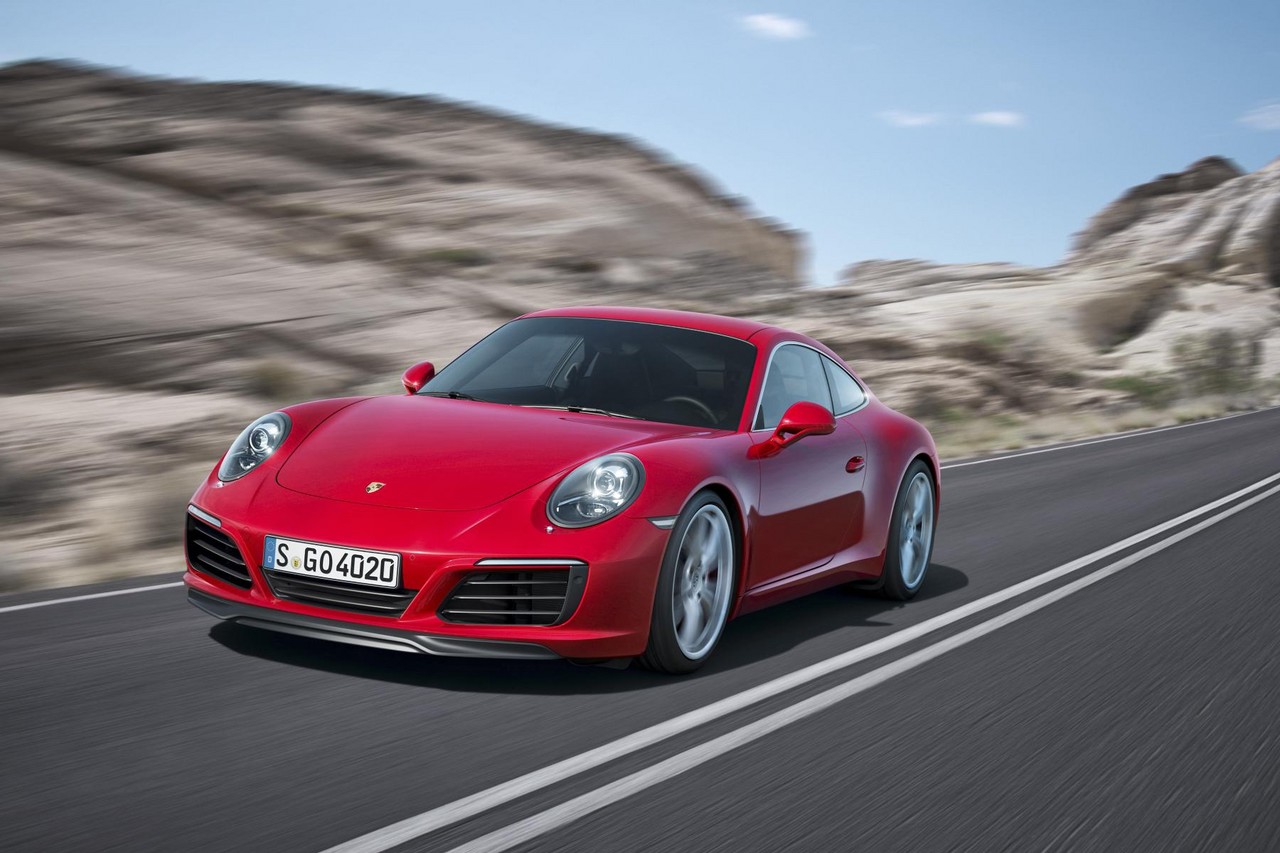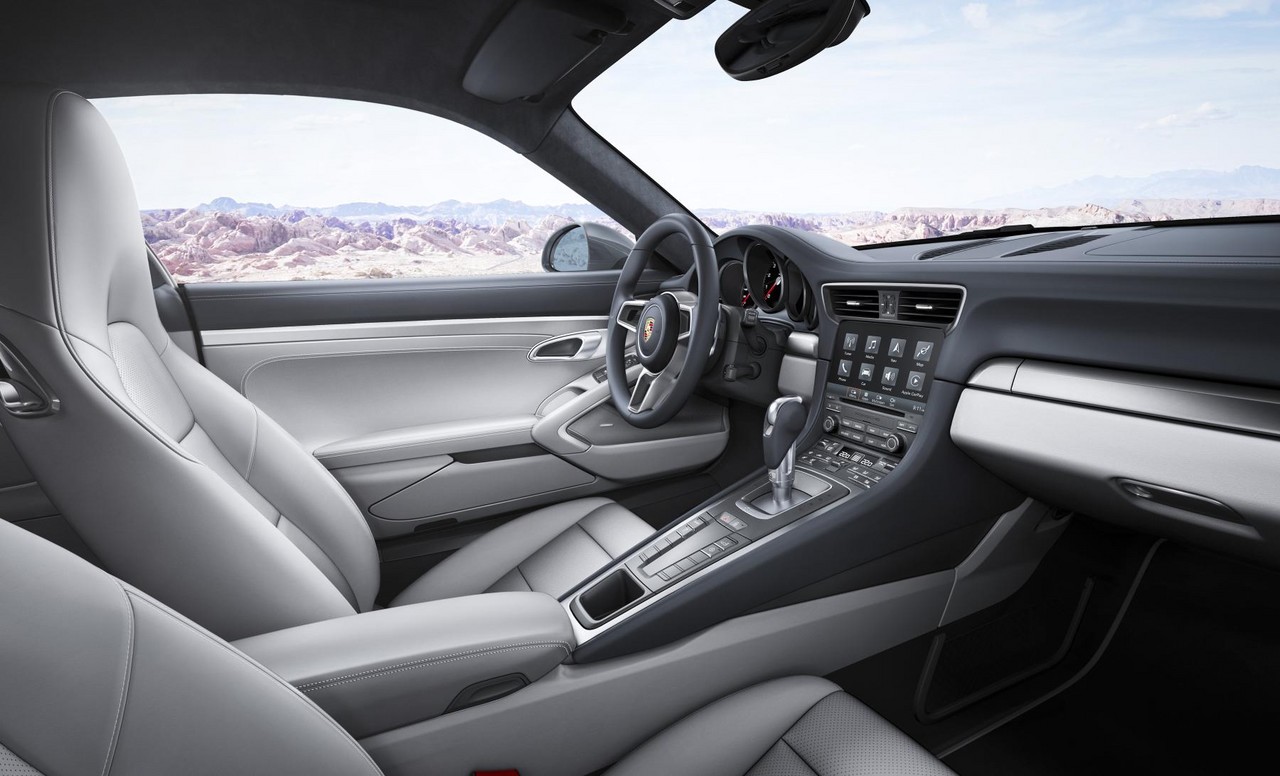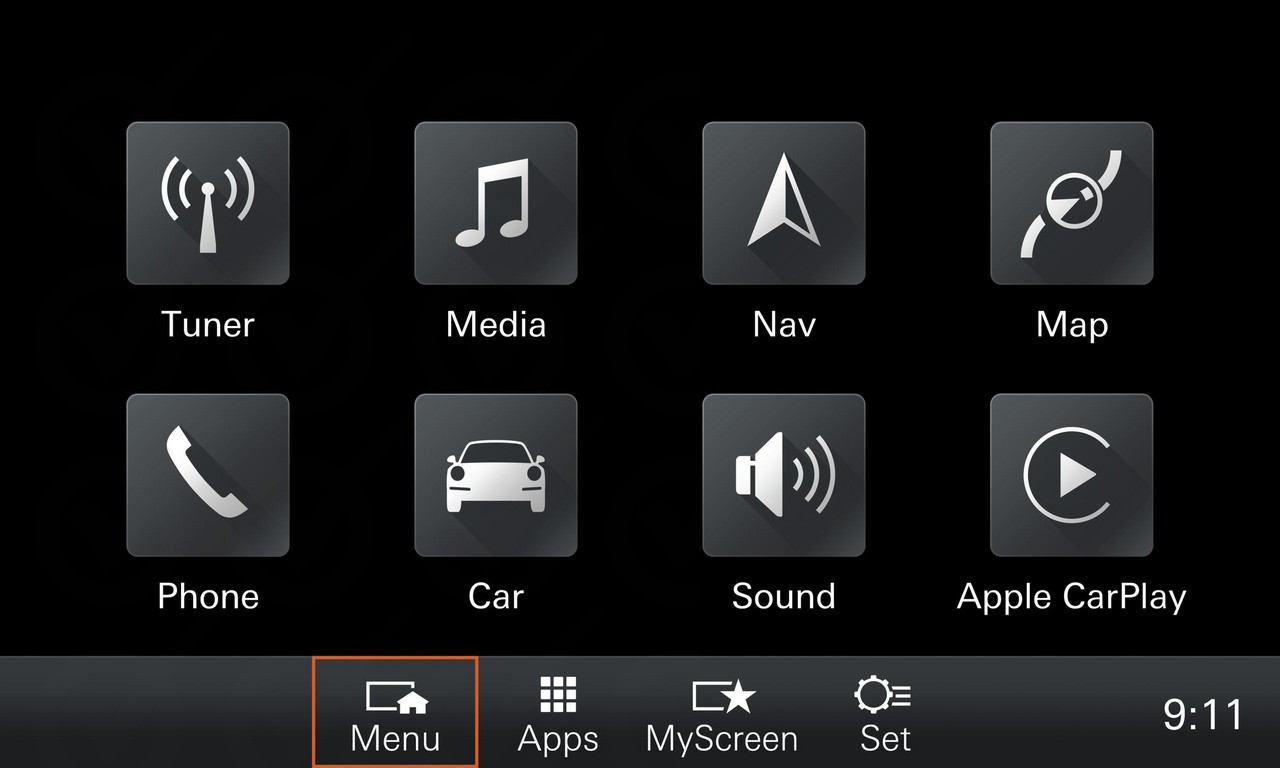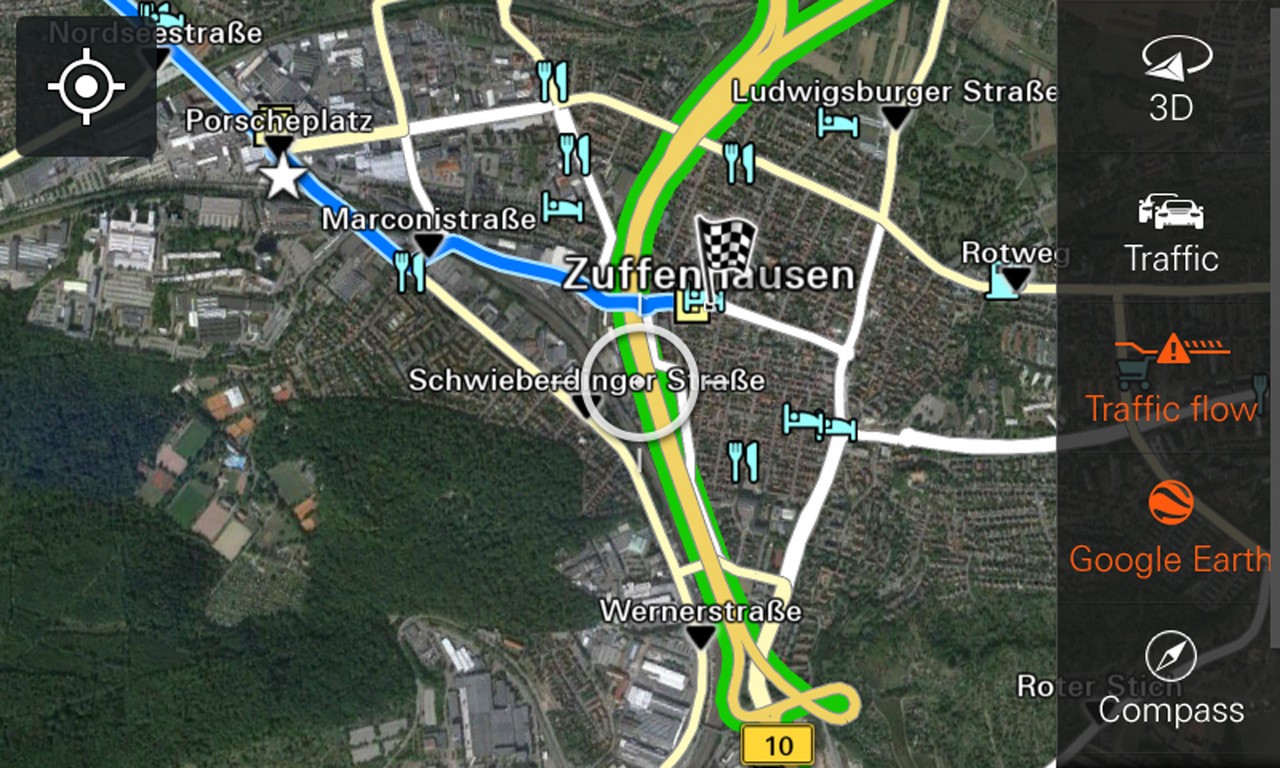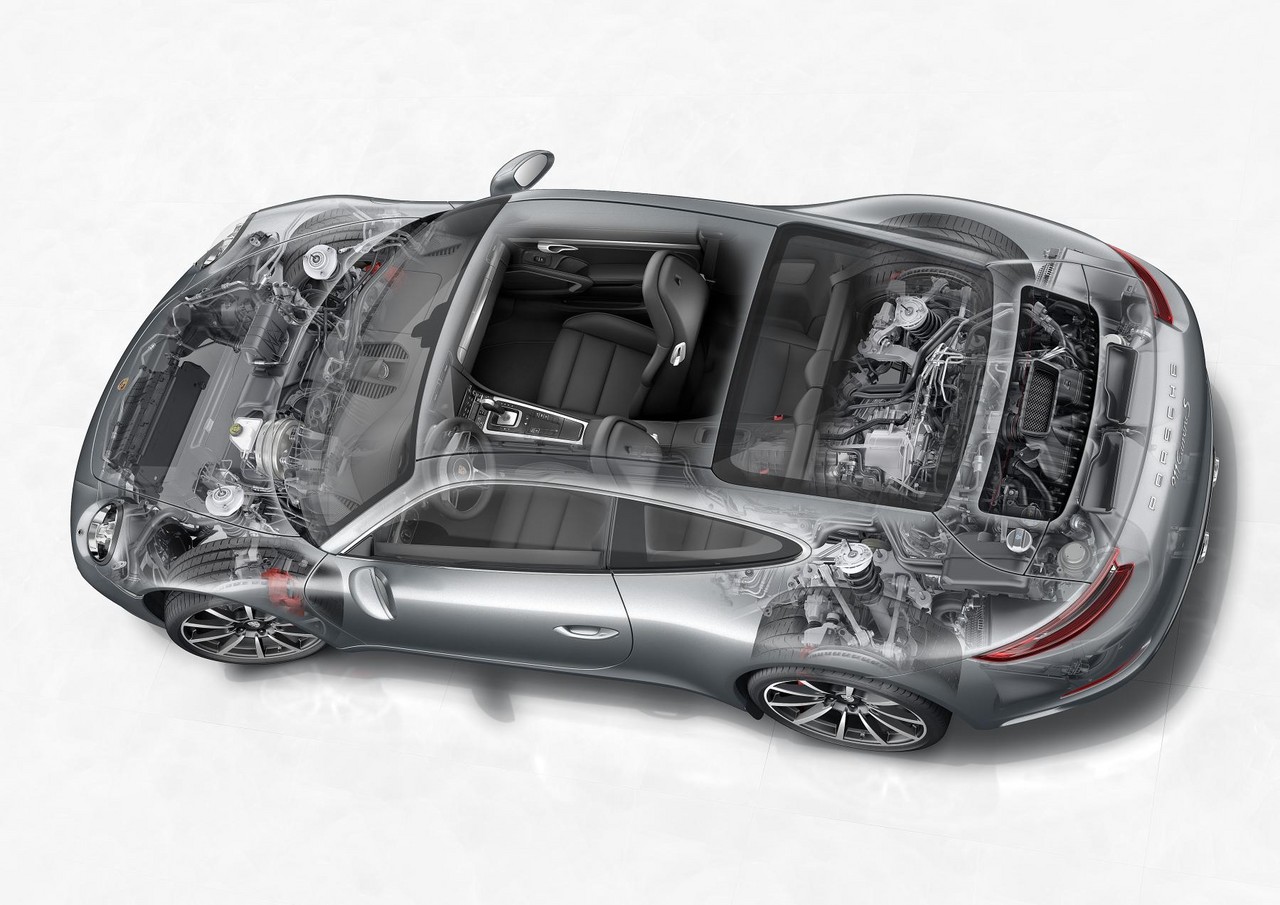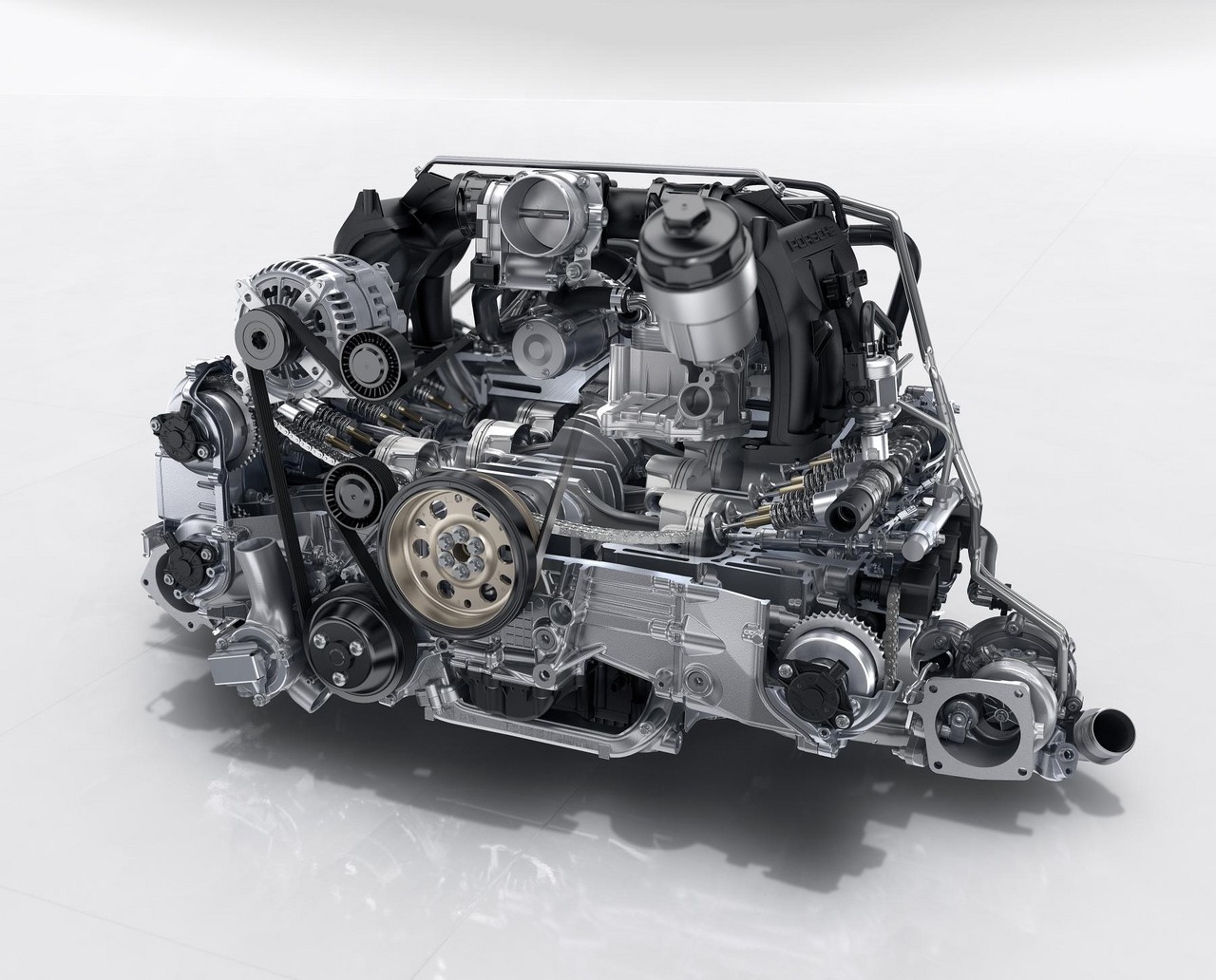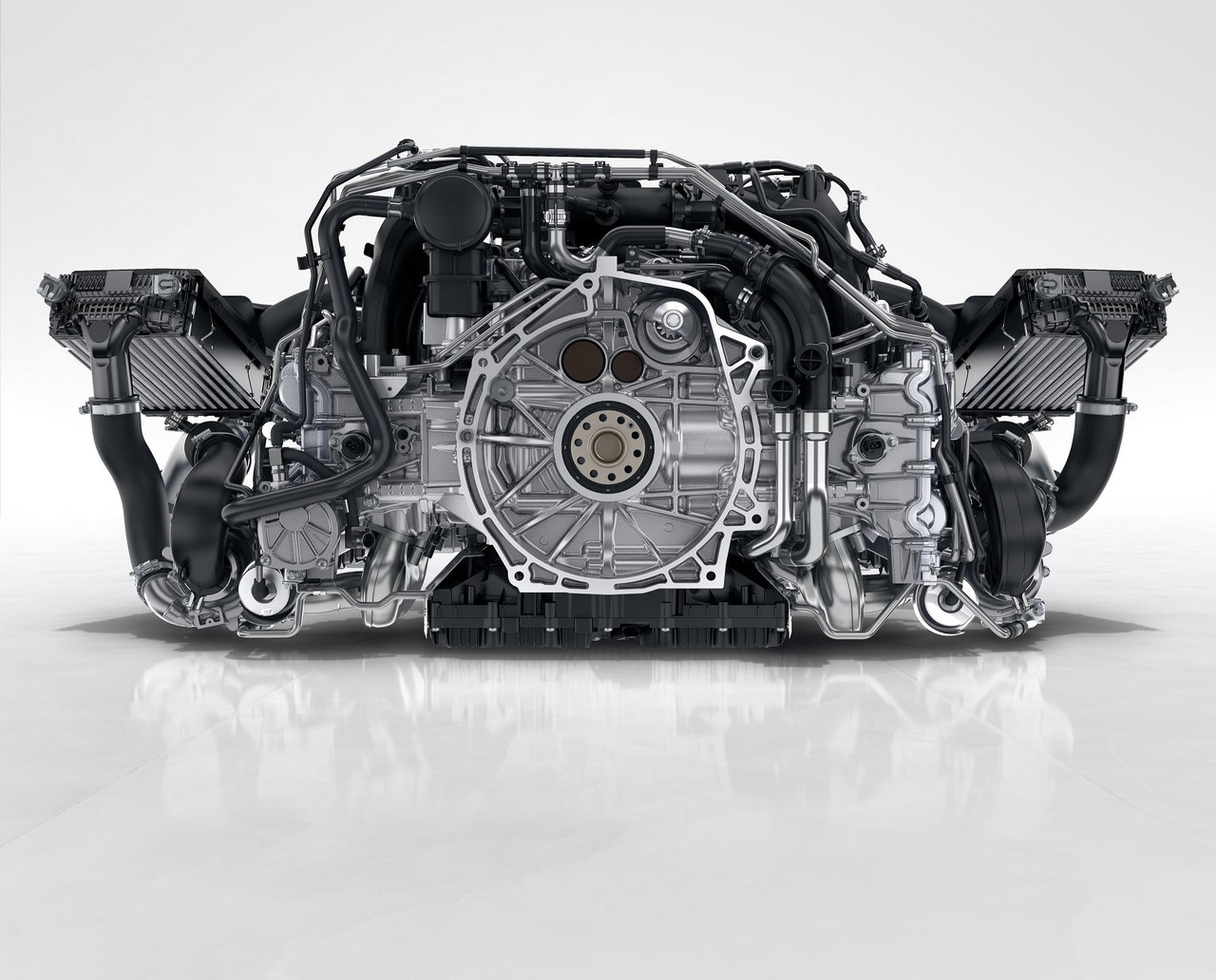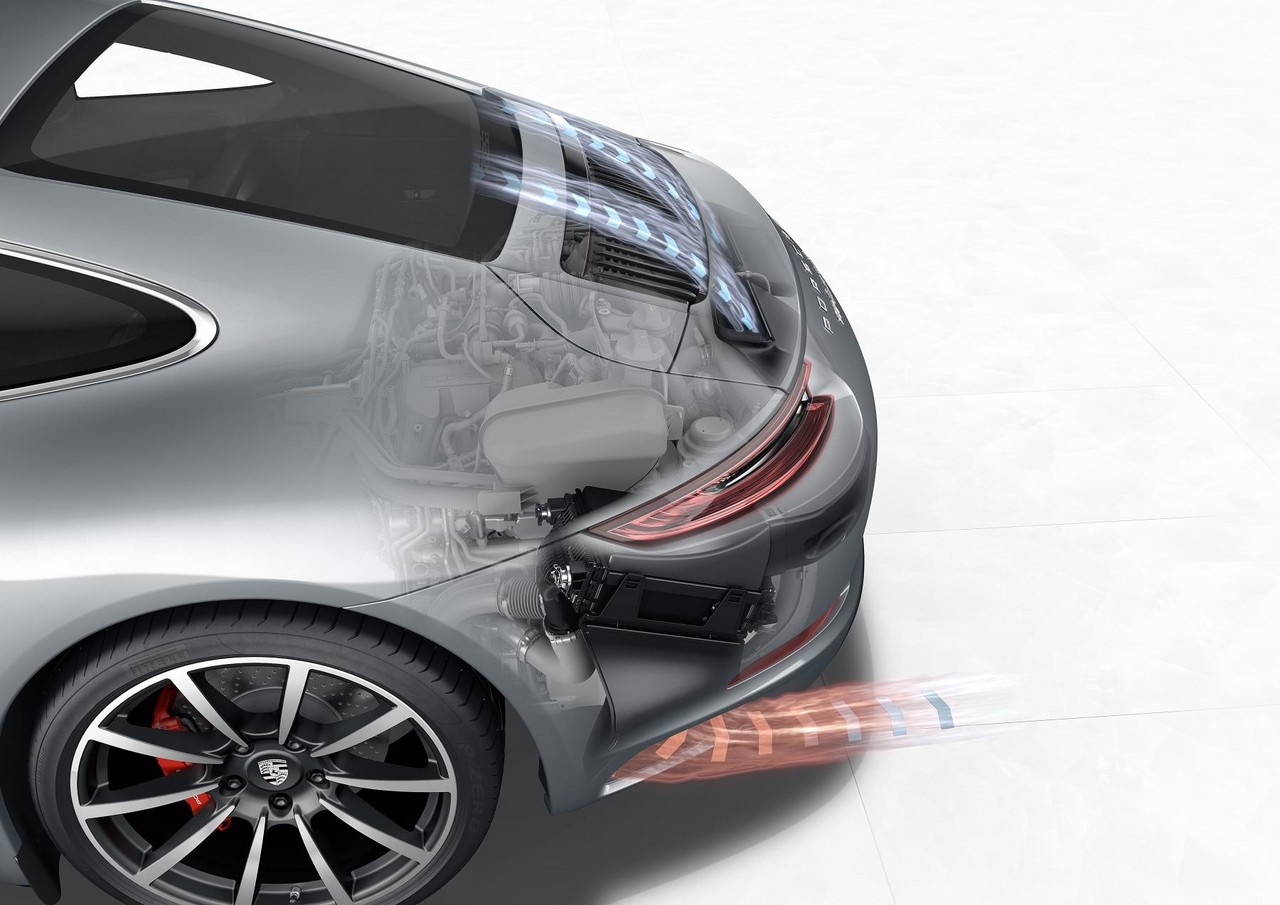
- Free-revving flat six-cylinder engines
- Supportive front seats
- High standard of interior fit and finish
- Excellent ride/handling balance
- Electromechanical steering is accurate and precise…
- … but lacks feel of Porsche 997 911 Targa
- For seven-speed manual transmission, shift action lacks precision of six-speed predecessor
- Porsche 981 Cayman has superior dynamics
- High servicing and repair costs
Review: Porsche 991.I 911 Targa (2014-15)
Overview
Released in Australia in May 2014, the Porsche 991 Series I (991.I) 911 Targa range consisted of all-wheel drive ‘4’ and ‘4 S’ variants, powered by 3.4- and 3.8-litre horizontally-opposed six-cylinder engines respectively. Transmission options consisted of seven-speed manual or seven-speed double-clutch units (Porsche’s ‘PDK’ or Porsche-Doppelkupplungsgetriebe).
Engines
The 3.4- and 3.8-litre boxer cylinder engines had direct injection, double overhead camshafts, four valves per cylinder and Porsche’s ‘VarioCam Plus’ variable intake valve timing system with two-stage lift for the intake valves (controlled by electrohydraulically-operated tappets), and a compression ratio of 12.5:1. The engines also had an ‘auto stop/start’ function which enabled them to automatically shut down when the vehicle was stationary in traffic or cruising to conserve fuel.
| Engine | Trans. | Peak power | Peak torque | |
|---|---|---|---|---|
| 911 Targa 4 | 3.4-litre MA104 petrol F6 | 7sp man., 7sp DCT |
257 kW at 7400 rpm | 390 Nm at 5600 rpm |
| 911 Targa 4 S | 3.8-litre MA103 petrol F6 | 7sp man., 7sp DCT |
294 kW at 7400 rpm | 440 Nm at 5600 rpm |
All-wheel drive (AWD) system
The all-wheel drive system for the Targa 4 and Targa 4 S utilised an electronically controlled multi-plate clutch. In normal conditions, two-thirds of the engine’s torque was directed to the rear wheels. The Porsche Traction Management (PTM) system, however, continuously monitored driving conditions (i.e. wheel rotation speeds, steering angle, longitudinal and lateral acceleration) and could provide an infinitely variable front:rear torque split.
The Targa 4 S was also fitted with Porsche Torque Vectoring (PTV) which provided targeted brake interventions at the inside rear wheel when cornering to reduce understeer, while the differential lock could improve acceleration on exit. While models with the manual transmissions had a mechanically locking rear differential, models with the PDK transmission had an electronically-controlled, fully variable differential lock (PTV Plus).
Dimensions and body
Compared to the 997 911 Targa , the 991 911 Targa was 64 mm longer (at 4491 mm), the same width (1852 mm), 12 mm lower (1298 mm) and had a 100 mm longer wheelbase (2450 mm). Relative to the 991 911 Coupe , the 991 911 Targa had a wide bar in place of the B-pillars aft of the doors, a movable roof section above the driver and passenger, and a wrap-around rear window with no C-pillar. Furthermore, the roof – which consisted of a soft top and a glass rear window – could be automatically stowed behind the rear seats in 19 seconds. Once lowered, a wind deflector could be erected manually to reduce drafts and buffeting in the interior.
Steering and suspension
The 991 911 Targa had electromechanical power steering (previously hydraulic), revised MacPherson strut front suspension and independent, multi-link rear suspension. The Targa 4 S was also fitted with Porsche Active Suspension Management (PASM), an electronically-controlled variable damping system which provided continual adjustment of damper forces according to road conditions and driver behaviour.
Safety equipment
Standard safety equipment for the Porsche 991 911 Targa included dual front airbags, front seat-mounted side airbags, front door-mounted head airbags, ABS, electronic brake force distribution, brake assist, electronic stability control, traction control and front seatbelts with pretensioners and load limiters.
Brakes
The Porsche 911 Targa 4 had 330 mm ventilated brake discs with four-piston aluminium monobloc fixed calipers front and rear. The Targa 4 S, however, had 340 mm front brake discs with six-piston calipers.
Features: Targa 4 and Targa 4 S
Standard features for the Porsche 911 Targa 4 included 19-inch alloy wheels with 235/40 ZR19 front and 285/35 ZR19 rear tyres, a Bose surround sound system with twelve speakers, a subwoofer, CD/DVD player, MP3-compatibility, auxiliary inputs (3.5 mm/USB) and Bluetooth connectivity, a satellite navigation system with a seven-inch touch screen (‘Porsche Communication Management’), dual-zone climate control air conditioning, fourteen-way power adjustable and heated front seats with memory settings, leather seats, cruise control, directional bi-xenon headlights with LED daytime running lights and washers, automatic headlights, rain-sensing wipers, rear parking sensors, a leather-wrapped steering wheel and gear lever, split and folding rear seats, remote central locking, power windows and heated mirrors, a height and reach adjustable steering wheel, power-operated park brake, electrochromatic door mirrors, illuminated vanity mirrors, 12 volt power sockets, tyre pressure monitoring, a trip computer, motion-sensing alarm and an immobiliser.
The Targa 4 S was further equipped with 20-inch alloy wheels with 245/35 ZR20 front and 305/30 ZR20 rear tyres.
Brochure
Review: Porsche 991.II 911 Targa (2015-18)
Overview
Commencing production in late 2015, the Porsche 991 Series II (991.II) 911 Targa introduced new 3.0-litre biturbo horizontally-opposed six-cylinder engines for the Carrera and Carrera S models. Other changes include updated styling, the Porsche Communication Management system, revised suspension and rear axle steering.
The Porsche 991.II 911 Targa GTS 4 was available to order in Australia from January 2017.
| Variant | Engine | Trans. | Peak power | Peak torque |
|---|---|---|---|---|
| Targa | 3.0-litre DCK biturbo petrol F6 |
7sp man., 7sp DCT |
272 kW at 6500 rpm | 450 Nm at 1700-5000 rpm |
| Targa S | 3.0-litre DCH biturbo petrol F6 |
7sp man., 7sp DCT |
309 kW at 6500 rpm | 500 Nm at 1700-5000 rpm |
| Targa 4 GTS | 3.0-litre biturbo petrol F6 | 7sp man., 7sp PDK |
331 kW at 6500 rpm | 550 Nm at 2150-5000 rpm |
Styling and wheels
The Porsche 991.II 911 Targa could be identified by its new headlights with four-point daytime running lights, inset door handles, redesigned engine cover with vertical louvres and four-point brake lights.
The 991.II 911 Carrera was fitted with new five slim twin spoke alloy wheels and reduced rolling resistance tyres. For the 911 Carrera, the width of the rear rims increased by 0.5 inches to 11.5 inches, while the Carrera S had 305 mm rear tyres (previously 295 mm).
Interior
Inside, the 991.II 911 Targa featured ‘Porsche Communication Management’ (PCM) with a seven-inch touch display and voice control. Furthermore, PCM could be operated using multi-touch gestures like a smartphone and could interpret hand-written user inputs; the centre armrest also had an integrated smartphone tray for battery charging and optimised mobile phone reception. For Australian-delivered models, however, mobile phones and smartphones could only be connected via Bluetooth (or USB); as such, Google Earth and Google Streetview navigation functions were delayed until later in 2017 when a new LTE module was certified for Australia.
The 991.II 911 Targa had a new steering wheel design – based on that used in the 918 Spyder – which had a diameter of 375 mm; the optional ‘GT sports’ steering wheel, however, will had a 360 mm diameter.
PASM, rear axle steering and hydraulic lift
As standard, the 991.II Carrera and Carrera S were fitted with an updated Porsche Active Suspension Management (PASM) system which included electronically-controlled dampers and could lower the ride height by 10 mm. The 911 Carrera was also fitted with new shock absorbers which had wider spread characteristics that, according to Porsche, enhanced comfort due to a ‘more precise response characteristic’ and ‘improve body connection during dynamic driving’
As extra-cost options, the 911 Carrera was available with:
- A rear axle steering system which was adapted from the 911 Turbo and 911 GT3. According to Porsche, rear-axle steering enhanced turn-in behaviour, reduced the turning circle by 0.5 metres and improved stability when changing lanes at high speeds; and,
- A hydraulic lift system which consisted of integrated lifting cylinders in the struts of the front axle. When activated by a button, the system increased ground clearance at the front axle by 40 mm within five seconds.
Safety equipment
As standard, the 991.II 911 Targa was fitted with a post-collision braking system which applies the brakes after a collision to reduce vehicle speed and the likelihood of a secondary collision.
Available as an option, the ‘lane change assistant’ used a radar to monitor traffic behind the driver and could warn the driver of approaching traffic via LEDs in the left and right of the door mirrors.
Features
For Australia, standard features for the Porsche 991.II 911 were extended to include digital radio tuning (DAB+) and Porsche’s ‘Front Park Assist’ which included reversing camera.
For 911 Carreras with the PDK, the Adaptive Cruise Control (ACC) system had a coasting function which disengaged the clutch to reduce fuel consumption when coasting.
Features: Porsche 911 Targa 4 GTS
The Porsche 911 Targa 4 GTS could be identified by its 20-inch wheels painted in silk-gloss black, all-wheel drive body, ‘Sport Design’ front apron with low front spoiler, ‘Sport Design’ door mirrors, black Targa bar, increased rear spoiler extension, smoked tail lights, ‘silk-gloss black’ air intake grille, light strip between the tail lights and central black twin tailpipes.
Inside, the 911 Targa GTS had ‘Sports seats Plus’ with GTS logos, brushed black anodised aluminium trim strips on the instrument cluster and Alcantara trim for the seats, steering wheel rim, centre console and armrests. As standard, the 911 Targa 4 GTS was also fitted with Porsche’s ‘Sport Chrono Package’ with selectable drive modes.
Sport Chrono Package
For the optional Sport Chrono Package, the 911 Targa was fitted with a mode switch on the steering wheel which enabled the driver to select from ‘Normal’, ‘Sport’, ‘Sport Plus’ and ‘Individual’ settings. For ‘Individual’, the driver could configure the Porsche Active Suspension Management (PASM), active engine mounts, PDK shifting strategy and sports exhaust system. Where fitted with the PDK, a ‘Sport Response Button’ prepared the drivetrain for maximum acceleration for 20 seconds by engaging the optimum gear and adjusting the engine management – this could be before overtaking manoeuvres.
March 2017 update: Porsche Connect Plus and 911 S power kit
From March 2017, the Porsche 991 911 Targa was equipped with the Porsche Connect Plus infotainment system. Porsche Connect Plus included Apple CarPlay smartphone integration, an LTE telephone module with SIM card reader, Wi-Fi hotspot functionality and the Porsche Connect App which provided specific smartphone content via the integrated Porsche Communication Management (PCM) system in the centre console. Furthermore, the Porsche Connect App included the following features: My Calendar, My Destinations, Contacts, Picture Navigation (navigation to GPS co-ordinates in picture) and First Mile/Last Mile navigation which provided navigation from the vehicle to the final destination when on foot.
From March 2017, the 911 Carrera S and 911 Carrera 4S could be specified with an optional power kit which increased peak power by 22 kW to 331 kW. The power package upgrade included larger turbochargers, the Sport Chrono package with dynamic engine mounts, a modified brake cooling system and a twin exhaust system. Depending on vehicle specification, prices for the power kit started at $24,580. From June 2017, the power kit was available from Porsche Tequipment as a retrofit option for 911 S models that had been fitted with the Sport Chrono package.
Related links
